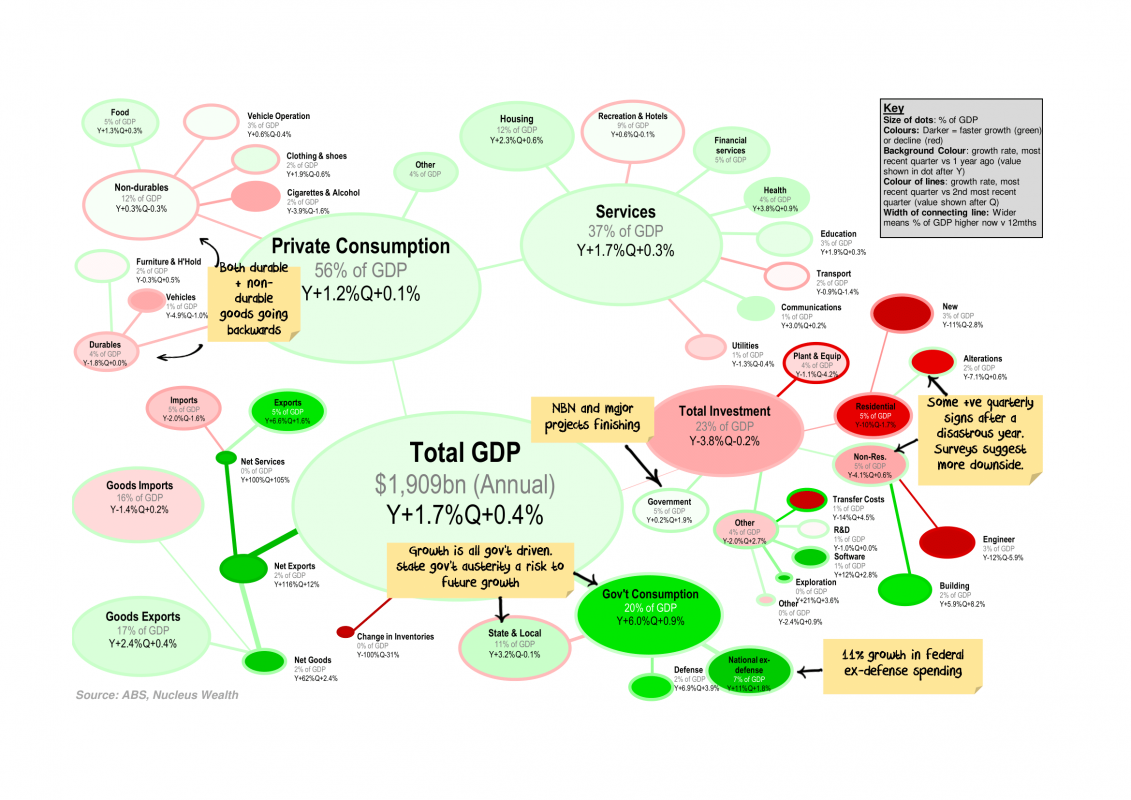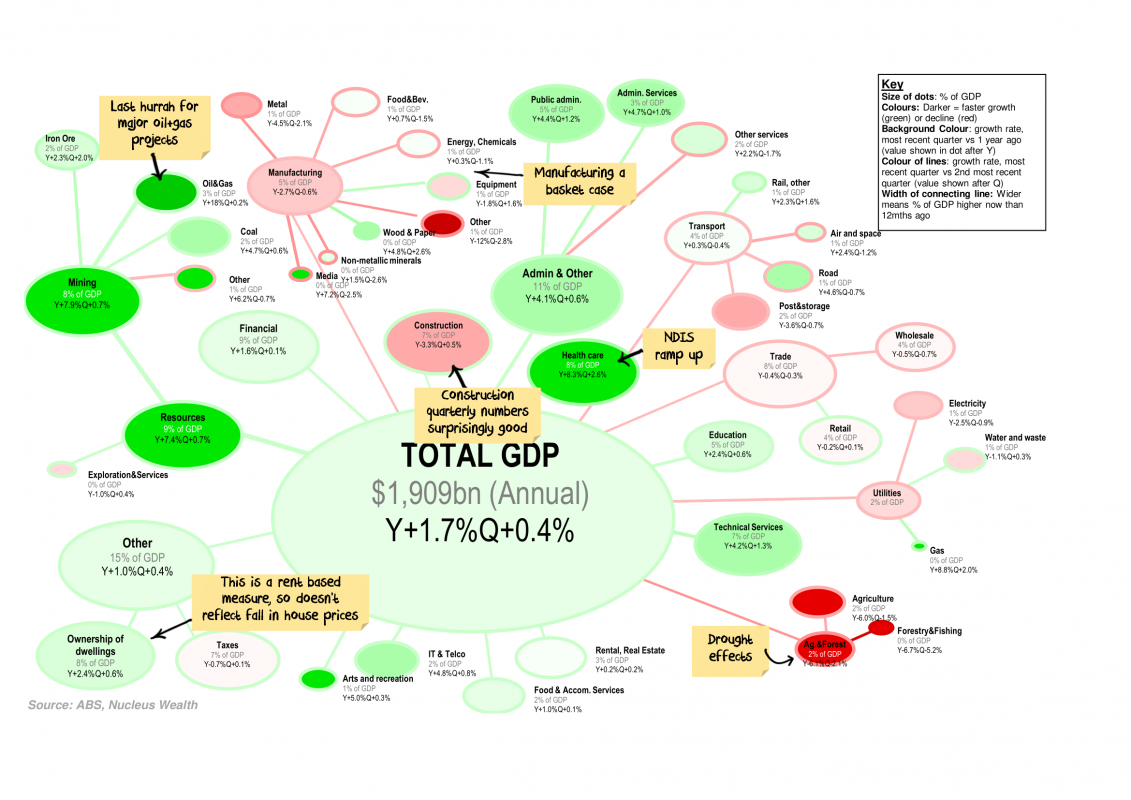Frank Uhlenbruch, Investment Strategist in the Australian Fixed Interest team, Janus Henderson provides his Australian economic analysis and market outlook.
Market review
Australian government bond yields initially followed offshore yields higher
on optimism that a trade deal was imminent. However, sluggish domestic economic
data and Reserve Bank of Australia (RBA) commentary on unconventional monetary
policy saw government bond yields end the month lower. Improving sentiment
supported equity and credit markets. Overall, the Australian bond market, as
measured by the Bloomberg AusBond Composite 0+ Yr Index, rose by 0.82%, with
price appreciation from modestly lower yields boosting the income return.
Three and 10 year government bond yields rose to their highs of 0.88% and
1.30% following reports of a ‘Phase 1’ trade deal between the US and China and
stronger US services sector data. Yields then rallied as it appeared a trade
deal may be delayed and RBA commentary on unconventional monetary policy was
seen as dovish. Australian three and 10 year government bond yields ended the
month 16 basis points (bps) and 11bps lower at 0.65% and 1.03%.
Australian data releases remained consistent with growth running at a
sub-trend rate, with limited signs of recent fiscal and monetary easing
boosting domestic demand. Retail sales for September were sluggish, gaining
0.2% over the month but falling by 0.1% in volumes terms over the quarter.
While there was an improvement in consumer sentiment in November, confidence
levels remain subdued with indications that uncertain consumers are saving
rather than spending recent gains from tax rebates and lower mortgage rates.
Despite a small improvement in business conditions in the October NAB
Business Survey, both confidence and activity measures remain below longer-run
measures and have yet to show signs of a meaningful response to earlier policy
stimulus. Consistent with sluggish survey readings, construction work done fell
0.4% in the September quarter, while private capital expenditure fell by 0.2%.
This data, along with weak retail sales, point to another quarter of subdued
growth in the upcoming release of the September quarter national accounts.
Labour market conditions softened, with employment falling by 19,000 in
October, the first fall in 16 months. The unemployment rate lifted from 5.2% to
5.3% and the participation rate fell from 66.1% to a still historically high
level of 66%. Wages growth remained modest, with the Wage Price Index lifting
by 0.5% over the September quarter for a yearly growth rate of 2.2%. RBA
commentary suggests that they expect to see wages growth around these levels
persist for some time before lifting as labour market slack is eventually
absorbed.
Against the backdrop of sluggish activity and perceived dovish central bank
commentary, markets moved to factor in further easing over 2020 after largely
ruling out a December move. Markets are assigning a 60% chance of a February
2020 easing and have a 0.50% cash rate fully priced by May 2020. By the end of
2020, markets are assigning a 40% chance of the cash rate falling to 0.25%, the
effective lower bound.
Credit markets benefitted from the improvement in trade-related risk
sentiment and investors’ ongoing search for yield, with the Australian iTraxx
Index rallying 3bps to end the month at 56bps. Primary markets were active as
companies looked to finalise debt funding ahead of the end of the year. Notable
deals included residential mortgage-backed securities (RMBS) issued by Bendigo
and Adelaide Bank, ING, and CBA, with the latter being the first RMBS deal to
replace the historically used Bank Bill Swap Rate (BBSW) with AONIA (Australian
Interbank Overnight Cash Rate) as a reference rate for the payment of coupons
to investors.
Market outlook
Our base case remains for an extended period of accommodative monetary
policy that will only be unwound once the RBA has confidence that inflation
will settle in the middle of its target band. The latest set of forecasts from
the RBA saw them downgrade their near-term economic growth forecasts by 0.25%,
although they left their 2020 and 2021 GDP forecasts unchanged at 2.75% and 3%.
With spare capacity being absorbed at a slower rate, the RBA pushed back the
timing of when core inflation reaches 2% from mid-2021, to the end of 2021.
While the RBA considered easing monetary policy at its November meeting, it
chose instead to join the US Federal Reserve and other central banks in pausing
to wait and see how policy easing to date flows through into the broader economy,
how trade developments unfold and the extent of any fiscal easing.
The RBA maintains an easing bias and is of the view that further cuts would
provide additional net stimulus. In a landmark speech, the RBA Governor
signalled that a 0.25% cash rate reflected the effective lower bound for the
cash rate. The Governor saw negative interest rates in Australia as
extraordinarily unlikely.
If further support for the economy was required when the cash rate was at
the lower bound, then the RBA would consider unconventional policy measures,
with the main focus on purchasing government bonds, including state government
bonds, from the secondary market to drive down the risk-free rate that affects
all asset prices and interest rates in the economy. If such policy support was
required, the Governor noted that a combination of policy responses, including
fiscal, would deliver the best results.
With little signs of recent policy stimulus and a turnaround in house prices
showing up in activity, labour market and confidence indicators, we look for a
further rate cut in February 2020 which would take the cash rate down to 0.50%.
The prospect of the Government bringing forward ‘Phase 2’ tax cuts worth around
$13.5bn in the May 2020 Budget, which would come into effect on 1 July 2020 ,
would significantly reduce the burden on monetary policy and rule out the need
for a further cash rate cut and unconventional measures. This is our central
case view and we see the stimulus from these measures raising the prospect of
the cash rate lifting over the latter part of 2022.
We see nearer term risks tilted towards our low case scenario, where the
cash rate falls to 0.25% and a lack of fiscal easing forces the RBA to
initially extend its forward guidance. A lack of a coordinated policy response
would see the RBA embark on a government debt purchase programme that flattens
the domestic yield curve. Overall, we see three and 10 year government bond
yields of 0.66% and 1.05% (at the time of writing) as offering little
opportunity to express strong views on duration.
We continue to remain attracted to maintaining a core exposure to
inflation-protected securities in an environment where policy is being firmly
directed to boosting growth and lifting inflation back towards central bank
targets. Despite a modest and ongoing lift in breakeven inflation rates from
the record low levels experienced in late August, current pricing suggests
markets still have little confidence that recent policy moves will gain much
traction. However, with the cost of buying inflation protection now so low, we
feel it makes sense to position for the prospect of a cyclical lift in
inflation over the next few years, especially if one contemplates even more
extreme policy measures to reflate economies.






